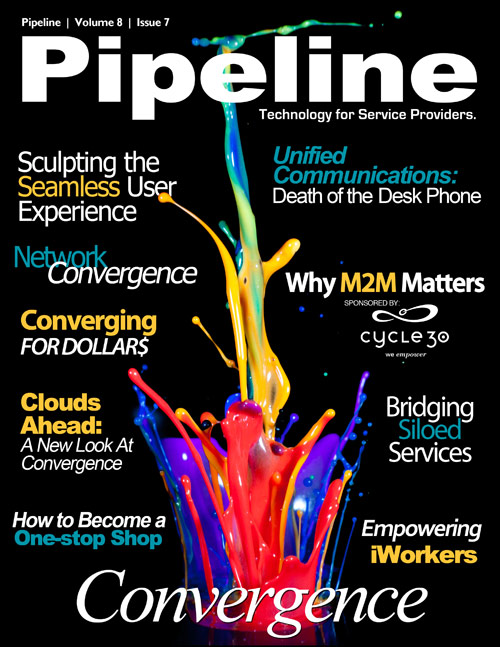By: Jesse Cryderman

Just for fun, I wrote the first paragraph of this story on a collaborative cloud document editor on three different devices, across three different networks. I started on my laptop over Wi-Fi from a terrestrial broadband connection. I then shifted over to my smartphone and onto a 3G wireless network, wrote what I could with Swype input while walking to a nearby cafe, and turned on my tablet as I entered. My tablet connected to the free Wi-Fi inside, and I promptly finished typing this sentence.
I know what you're thinking: what a dork. (Would it have been cooler if I said I was watching "Reservoir Dogs" across a network triple-play?)
Middle school nicknames and definitions of "fun" aside, this kind of seamless experience is increasingly common. Video, voice, gaming, productivity, planning, social networking, shopping; today, all of these activities and more can be delivered over multiple networks with agility. This fact has given rise to the modifiers "anywhere" and "everywhere" being added to just about anything that can be displayed in pixels. As you can see from the traffic patterns in Figure 1, we use our smartphones all day long, across all locations (even in bed), and that use extends across multiple networks.

Michael Bjorn, head of research at Ericsson ConsumerLab commented on consumers' "everywhere" mobile data use writing, "We are entering an era in which it makes no sense whatsoever to talk about online versus offline for the simple reason that we are constantly switching between the two. And we scarcely even think about it."
Beyond simply enabling the same video stream or chat capability across multiple screens however, there is a larger task of enabling the same Quality of Experience (QoE) across numerous device platforms and networks. The intersection between ubiquitous delivery and quality is where the concept of a seamless user experience develops. As Iyad Tarazi, VP of Network Development and Engineering, Sprint explained, "The ideal end-state is one where changes in the network access are completely transparent to the users."
By leveraging their strengths, CSPs are uniquely positioned to monetize the seamless user experience, provided they take the right steps. However, if a seamless user experience is the end goal, neither services nor the transports they are delivered over can exist in silos. In order to deliver a compelling, seamless user experience, service providers must utilize a platform-, access-, and device-agnostic application server, support multiple radio access technologies (RATs), and build a robust content and network partner ecosystem.
Next Generation Application Server
As we reported last month, multi-screen offerings are table stakes for service providers these days. The strategy is to deliver content to where the customers are, not expect them to find you. In a recent report, Michael Bjorn, Ericsson, wrote that, "tablet users clearly show how app usage migrates between devices while the underlying app-related behavior remains unchanged." However, if there isn't significant openness and interoperability, multi-device play doesn't work well. A next generation application server can deliver consistent service offerings over phone, TV, mobile, tablet or computer, and is equally competent regardless of access or platform.
According to an Analysys Mason report, "Competition between CSPs and with companies in adjacent industries, such as Google, Yahoo!, Microsoft and Apple, is driving investment in telecoms application servers to enhance existing services and combine them with new offerings, such as presence, location, IPTV and other new capabilities."








